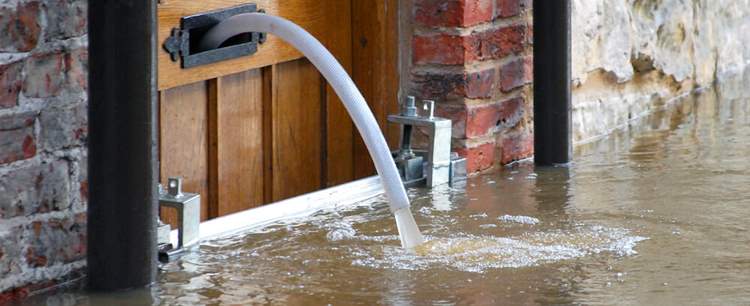The winter season is upon us again and, with it, comes a time when many homeowners are likely to worry about the risk of flooding to their property in the wake of storms, heavy rain and rising river and sea levels.
As we noted in our recent article, the last period of serious flooding in this country resulted in 3,000 people having to move out and find temporary accommodation.
In the greater scheme of things, this may not seem a large number of serious affected homes, but many more were subjected to other forms of damage – so it may be as well to be as prepared as possible in advance of any emergency.
Is my property at risk?
The first thing to find out, of course, is the risk of flooding to your property. By visiting the Environment Agency website and entering the postcode of any property located in England, you may see at a glance whether it is low or high-risk of flooding from either rivers or the sea.
You may also ask the Environment Agency to search its records for any previous flooding of the property in question. The search is generally free of charge, unless more than 18 hours is spent on finding the answers to the questions you have asked.
Flood insurance
The answers you get in the course of this research may help to explain why you might encounter difficulties in arranging insurance on property which has been damaged by flooding in the past or is at risk of flooding in the future.
Despite the existence of a reinsurance scheme, Flood Re, to help insurers who sign up to their scheme cover the cost of flood claims, many of them may still charge a high premium if your home has suffered flooding in the past – or even decline your application entirely.
In that event, you may want to consult a specialist flood insurance provider, such as ourselves here at UKinsuranceNET in order to arrange tailor-made, yet competitively priced, flood insurance.
If it looks as though you might be flooded
Probably the most important precaution is to keep yourself informed – weather forecasts on the radio and television are obvious sources of impending storms and the risk of flooding in certain areas.
Check online too for the government’s Flood Information Service, which gives a five-day forecast of flood risks for the whole of England and Wales. In addition, the same site gives daily flood warnings of areas at particular risk and whether immediate action needs to be taken.
You may even sign up to receive flood warnings by telephone – day or night – and by email. The service is provided by the government free of charge.
If you receive any warnings or the forecasts are predicting flooding in your area, make sure you have stocked up on plenty of sandbags (your local DIY store or builders merchants or your local council is able to advise you where you might get them) and rolls of plastic sheeting to use in your first line of defence against the ingress of water, suggests the Flood Risk Management Research Consortium.
If possible, move your car to higher ground and make a point of keeping documents (such as insurance policies, passports and others) and valuables in sealed plastic bags on an upper flood, above the floodwaters.
Further reading: Guide to flood insurance







